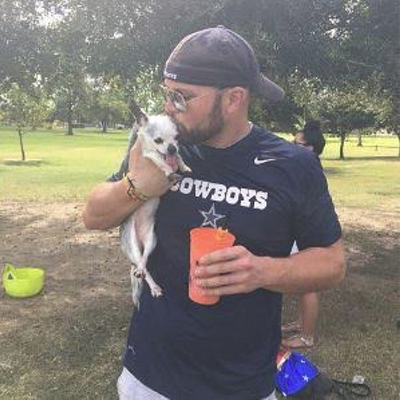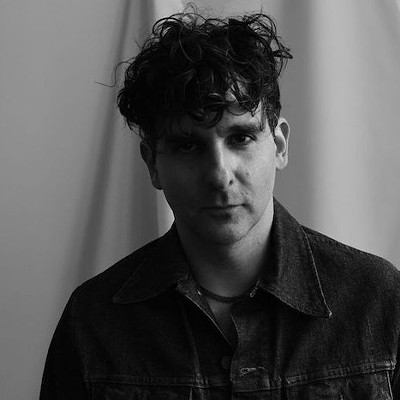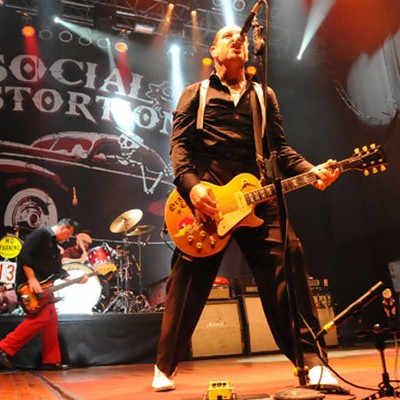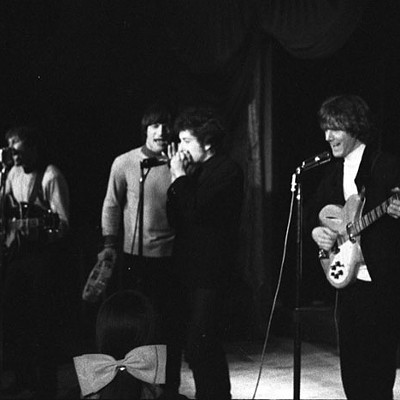Say what you will about Sean “Puffy/Diddy/Puff Daddy” Combs the rapper, but give the man credit for this: He is a keen businessman with an eye for what sells. So it makes sense that Combs noticed the recent '90s music revival and figured, "What the hell, let’s get the gang back together?" The result is the Bad Boy Family Reunion Tour, which features '90s mainstays like Lil Kim, Mase, 112, the Lox and, of course, Puff Daddy himself. The tour will make a stop at Toyota Center on September 15 this Thursday.
The tour recalls the day when hip-hop labels like Bad Boy Records and Death Row Records moved millions of records, created stars and generally set the tone for what the rap game was to be. Those days are long gone, laid to rest with the likes of rap legends like Tupac Shakur and Notorious B.I.G. Bad Boy Records doesn’t boast nearly the cachet it did in its late-'90s heyday – Puff Daddy is still its most noteworthy artist, and his creative peak was nearly 20 years ago – but the label certainly has had its moments. Come relive some of Bad Boy's highs and lows with us.
HIGH: Puff Daddy the Rap Mogul
Give Puffy credit: Dude knows how to build an empire. Once an unpaid intern at Uptown Records, Puffy later became an A&R executive at the label. He later took that newfound industry knowledge and founded Bad Boy, which quickly gained traction in the marketplace, thanks in part to Craig Mack’s first album, Project: Funk Da World, which later went Gold. Oh yeah, the label’s first release happened to be from a relatively unknown New York rapper named Christopher Wallace (you know him as Notorious B.I.G.), whose debut, Ready to Die, has since gone quadruple platinum. Other hitmakers assembled by Puffy included Total and Faith Evans.
LOW: Puff Daddy the Rapper
For as talented and insightful as Puff Daddy the businessman was, Puff Daddy the rapper? Yeah, not so much. Sure, his solo debut, No Way Out, was a multiplatinum smash, but don’t confuse success with quality. For starters, No Way Out featured appearances by Busta Rhymes and Notorious B.I.G., as well as an unknown New York rapper by the name of Jay Z, artists whose lyrical fire buoyed that of Puffy’s. Plus, as became the case throughout his career, the album’s best songs didn’t even feature original beats. The music-buying world got wise to Puff Daddy the rapper in time; his next three albums combined didn’t come close to equaling No Way Out’s sales totals.
HIGH: Ma$e, the Early Years
In the wake of Biggie’s shocking murder in March 1997, Puff Daddy needed a new star to anchor the Bad Boy ship. He found that in young phenom Mason “Ma$e” Betha, whose debut album, Harlem World, landed atop the Billboard charts and eventually moved nearly 5 million copies. That Ma$e recorded the album while still in his teens (he was only 20 when it dropped) was testament to the fact that he would serve as the face of the Bad Boy franchise for years to come. That is, until…
LOW: Ma$e, and Everything After That
Ma$e’s 1999 follow-up, Double Up, was a critical and commercial disappointment, so much so that Ma$e retired from the game before the album was even released. But it wasn't the disappointing sales figures that drove Ma$e away from Bad Boy; it was Christ. Ma$e retired from rap to pursue a more religious path, only to un-retire five years later with a much cleaner image. As you can expect, rap fans didn’t exactly embrace Ma$e’s new persona, and comeback album Welcome Back barely went Gold.
HIGH: Rivalry With Death Row Records
Competition often brings out the best in adversaries, and no feud better encapsulated this than East Coast label Bad Boy Records versus West Coast stable Death Row Records. The two engaged in diss tracks aplenty, jawed at awards shows and (allegedly) traded blows and bullets — all while both labels produced some of the best tracks in the annals of hip-hop. Biggie’s Ready to Die and Life After Death, Tupac’s All Eyez on Me...the list goes on. Unfortunately, not all competition in the rap game is kept on wax.
LOW: The Fallout of Said Rivalry
The Bad Boy/Death Row rivalry produced its fair share of classic music. Unfortunately, the feud ended with the deaths of each label’s cornerstone and arguably two of the Top 5 rappers of all time. Tupac was gunned down in September 1996 on the Las Vegas strip after a Mike Tyson fight. How someone was able to get away with this — on the Las Vegas strip, after a Tyson fight! — is baffling. Biggie, meanwhile, was fatally shot six months later, two weeks before his masterpiece, Life After Death, was to hit shelves. Nearly two decades after the fact, both murders remain unsolved.
Support Us
Houston's independent source of
local news and culture
account
- Welcome,
Insider - Login
- My Account
- My Newsletters
- Contribute
- Contact Us
- Sign out
[
{
"name": "Related Stories / Support Us Combo",
"component": "11591218",
"insertPoint": "4",
"requiredCountToDisplay": "4"
},{
"name": "Air - Billboard - Inline Content",
"component": "11591214",
"insertPoint": "2/3",
"requiredCountToDisplay": "7"
},{
"name": "R1 - Beta - Mobile Only",
"component": "12287027",
"insertPoint": "8",
"requiredCountToDisplay": "8"
},{
"name": "Air - MediumRectangle - Inline Content - Mobile Display Size 2",
"component": "11591215",
"insertPoint": "12",
"requiredCountToDisplay": "12"
},{
"name": "Air - MediumRectangle - Inline Content - Mobile Display Size 2",
"component": "11591215",
"insertPoint": "4th",
"startingPoint": "16",
"requiredCountToDisplay": "12"
}
,{
"name": "RevContent - In Article",
"component": "12527128",
"insertPoint": "3/5",
"requiredCountToDisplay": "5"
}
]
KEEP THE HOUSTON PRESS FREE...
Since we started the Houston Press, it has been defined as the free, independent voice of Houston, and we'd like to keep it that way. With local media under siege, it's more important than ever for us to rally support behind funding our local journalism. You can help by participating in our "I Support" program, allowing us to keep offering readers access to our incisive coverage of local news, food and culture with no paywalls.
Clint Hale enjoys music and writing, so that kinda works out. He likes small dogs and the Dallas Cowboys, as you can probably tell. Clint has been writing for the Houston Press since April 2016.
Contact:
Clint Hale
Trending Music
- How Much Longer Can Classic Rock Rule the Roost?
- Wang Chung Headline a Musical Time Trip to the '80s...and Land on the Moon!
- Top 10 Butt-Rock Bands of All Time
-
Sponsored Content From: [%sponsoredBy%]
[%title%]

Don't Miss Out
SIGN UP for the latest
Music
news, free stuff and more!
Become a member to support the independent voice of Houston
and help keep the future of the Houston Press FREE
Use of this website constitutes acceptance of our
terms of use,
our cookies policy, and our
privacy policy
The Houston Press may earn a portion of sales from products & services purchased through links on our site from our
affiliate partners.
©2024
Houston Press, LP. All rights reserved.





